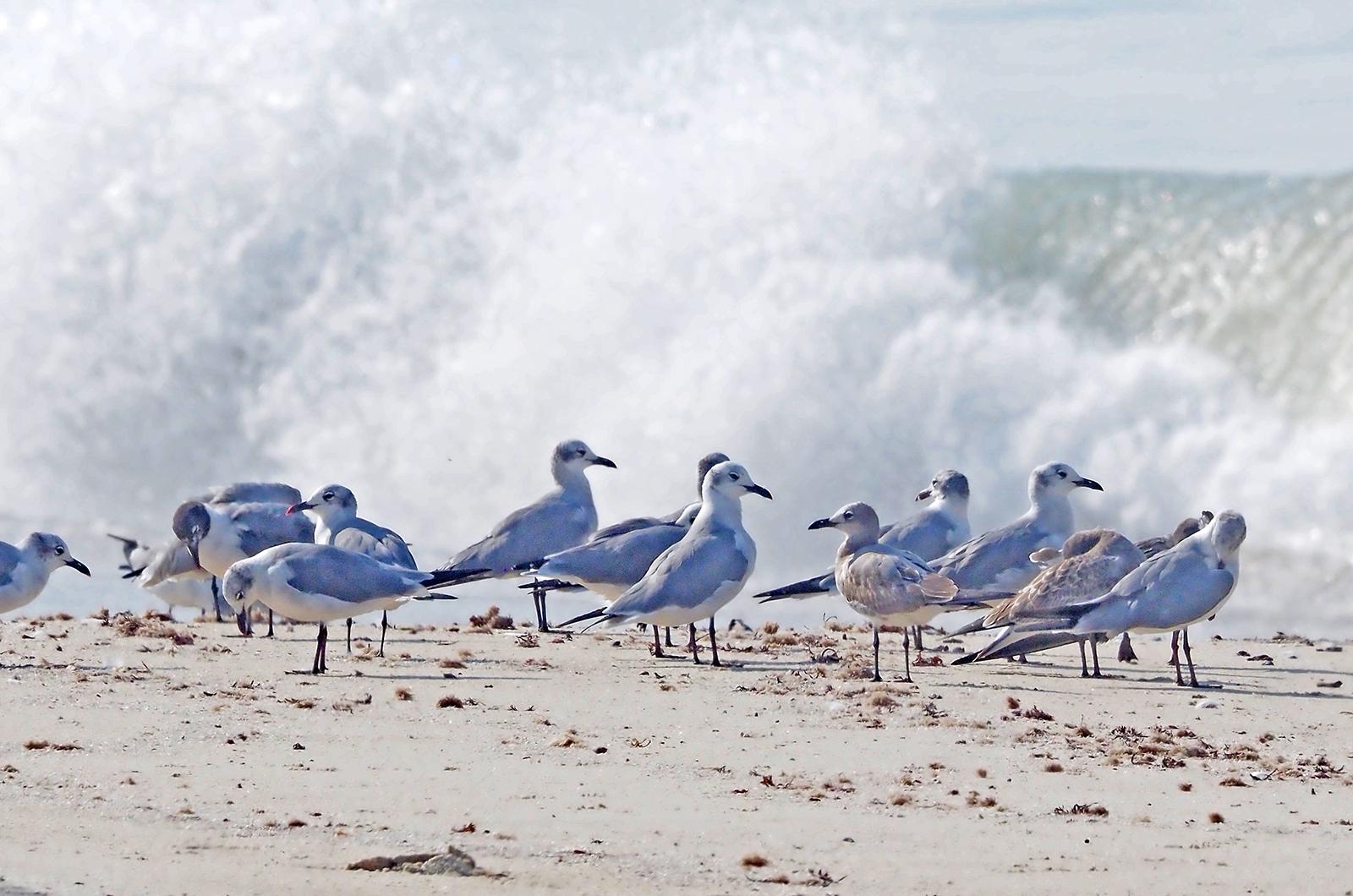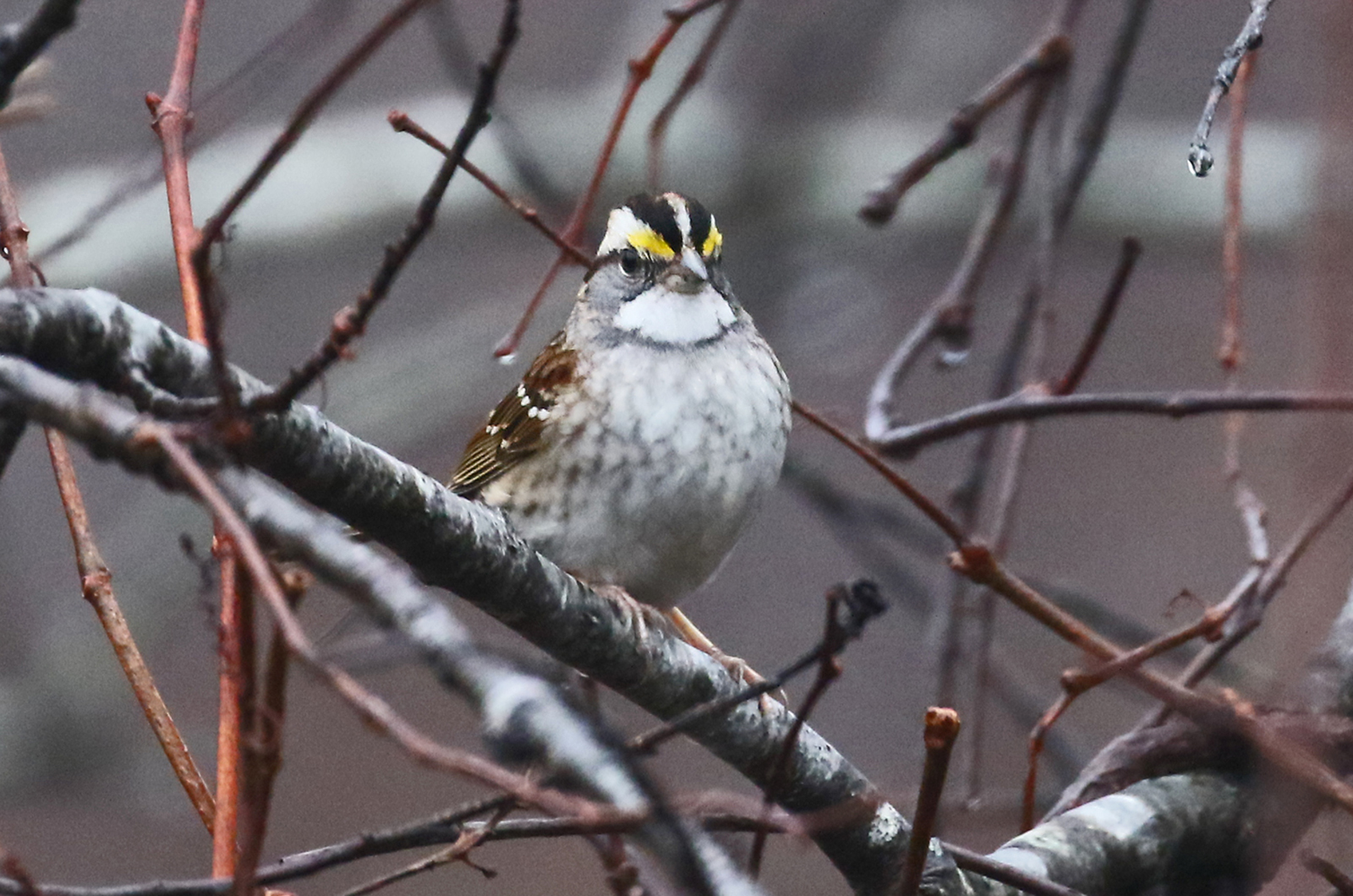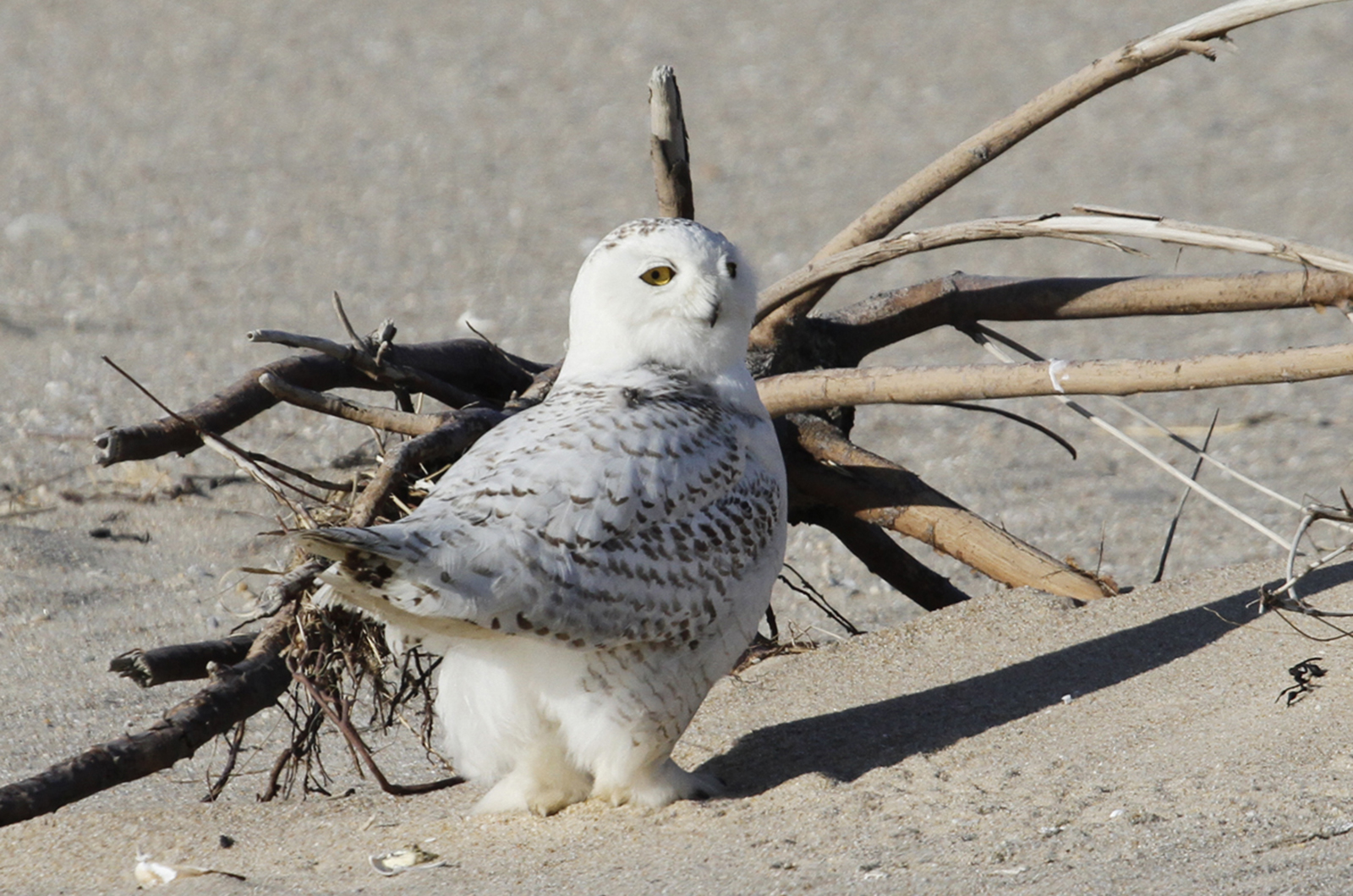This year approximately 5.7 million birds migrated over Martha’s Vineyard between August 1 and Nov. 15!
On a typical night — most birds are nocturnal migrants — approximately 1,000 migrants pass overhead. But migration peaked on two nights in October: there were approximately 22,000 migrants on Oct. 13 and 21,100 migrants on Oct. 22. These data points do not include daytime migrants such as hawks, hummingbirds, swallows and swifts, or species that migrate over the ocean such as shearwaters and some terns.
How do we know this? Doppler radar — the same radar used by weather forecasters — tracks information regarding the movement and position of precipitation, airplanes and other objects in the air, including migration birds. The Cornell Laboratory of Ornithology, Colorado State University and UMass Amherst work together to interpret these radars for each county in the country. Their results are published daily on the website birdcast.info during the migration seasons.
A month by month summary of the southward migration follows.
June is a busy month: the northward migration ends, the breeding season peaks, producing large numbers of fledgling birds departing the safety of their nests, and the southward migration starts. The first southbound migrants are the adult sandpipers and plovers arriving from their Arctic breeding grounds, including semipalmated sandpipers, spotted sandpipers and black-bellied plovers.
In July the migration consists mostly of adult shorebirds on our tidal flats, likely including the first whimbrels of the season. The first great blue herons also arrive from their mainland nesting colonies. And you may spot a royal tern visiting from further south along the Atlantic shoreline. Flocks of cedar waxwings can be seen departing from the Gay Head Cliffs as they head westward toward New York and New Jersey.
August arrives and our woodlands are much quieter as birds stop singing, the nesting season ends and our nesting warblers start departing. The shorebird migration becomes heavier as recently-fledged shorebirds from the Arctic catch up with the adults that had already arrived. Shearwaters start departing, pausing to feast on the abundant small fish called sand lance in our waters.
The northern-nesting jaegers start arriving. The first early migrating warblers, for example, northern waterthrushes appear. Herons start dispersing from their mainland nesting colonies, especially great blue herons, little blue herons and maybe even yellow-crowned night herons. And let’s not forget that large flocks of common and roseate terns show up to rest on our beaches,
In September the shorebird migration continues apace and the woodlands become alive with migrating insect-eating birds. Birders flock to the Gay Head Cliffs to spot these migrants as they gather in sometimes large numbers; on some days it is possible to find 20 or more species of warblers, and vireos other than red-eyed vireos can be spotted. Secretive species like mourning or Connecticut warblers pass through later in the month.
Our skies become more silent as most of our nesting ospreys depart, as do most of our terns. Laughing gulls appear and Caspian terns may be spotted. And large flocks of tree swallows frequent our beaches and fields.
The diversity and numbers of warblers declines as October progresses. They are replaced by the sparrows: it is possible to find 10 or more species of sparrows including species only found at this time of the year such as vesper, Lincoln’s, clay colored and lark sparrows. Winter residents including dark-eyed juncos, white-throated sparrows and red-breasted nuthatches appear, as do the first winter finches such as pine siskins and purple finches.
All three species of falcons are found: kestrel, merlin and peregrine. The brant show up in Ocean Park and the commuter crows, both American and fish, arrive for the winter. On the warbler front, yellow-rumped warblers are the most abundant; most of the other warblers have departed for warmer climes.
November brings the first of our winter resident waterfowl, including three species of scoters, common eiders and red-breasted mergansers. Also arriving are the first of the diving ducks that frequent our coastal ponds: greater scaup, common goldeneye and, of course, the diminutive bufflehead. Northern gannets are also more frequently seen. Flocks of snow buntings can be found on our beaches and fields. Vagrant songbirds such as the recently-spotted Townsend’s warbler and Bell’s vireo can show up.
What will show up in December? Our winter resident waterfowl will continue to arrive as more northern waters freeze. More winter finches will arrive, hopefully crossbills or redpolls. On the predator front, we may get rough-legged hawks or snowy owls but these may be more on my wish list than reality. Stay tuned!
We have bird sightings to report. On Nov. 12 Roger Cook watched multiple groups of three to five razorbills actively feeding around the boat he was on between Nomans Land and Squibnocket Point. Then on Nov. 17 Lanny McDowell found small batches of razorbills skimming over Vineyard Sound, maybe a third of the way from Lobsterville to the Elizabeth Islands, all moving due west.
I have updated information on the Bell’s vireo that was spotted on Nov. 6 near Black Point Pond and reported in last week’s column. I reported that the only other sighting reported on the website eBird was that on Oct. 23, 2012 when Lanny McDowell, Susan Whiting and Nancy Aronie spotted one at the Gay Head Cliffs. Let’s correct the record: Lanny reports the first sighting of a Bell’s vireo was from Squibnocket in the fall of 2004. So, the current sighting is the third Island record for this species!
Susan Whiting saw an orange-crowned warbler at Black Point Pond on Nov. 13, the same day that Charles Morano spotted a yellow-throated warbler — very different from our summer resident common yellowthroat — at the Oak Bluffs pumping station. On Oct. 14 Nancy Nordin and Nancy Weaver spotted it again and Susan Whiting observed it on Nov. 16.
Anne Whiting and Tara Whiting-Wells found a late-lingering osprey as it flew over Black Point Pond on Nov. 17.
Please email your sightings to birds@vineyardgazette.com.
Robert Culbert is an ecological consultant with Nature Watch LLC living in Vineyard Haven.








Comments
Comment policy »